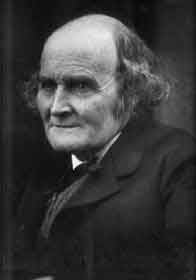Cubes
2. Some history
The origins of n-dimensional geometry have many roots. One stimulus to the development of n-dimensional geometry was the general ferment that resulted from the realization that Euclid's 5th postulate was independent of his other postulates. As unintuitive as the possibility initially seemed, there was a plane geometry which stood on an equal mathematical basis to Euclidean geometry and in which given a point P not on a line l, there were infinitely many lines through P parallel to l. The attention that the geometry developed by Janos Bolyai and Nicholai Lobachevsky fostered resulted in many attempts to put geometry into a broader context. Geometry did not end with the tradition handed down via Euclid's Elements and the analytical geometrical ideas that algebratized what Euclid had done.
There appears to be some consensus that it was Arthur Cayley (1821-1895), a British mathematician who earned a living by being a lawyer, who first called attention to the need for a systematic study of the properties of geometry in n dimensions. Cayley did this work partly in connection with his efforts to understand the relationships between Euclidean ideas and projective geometry.

Another pioneer in the study of higher dimensions was Alicia Boole Stott (1860-1940). She was the daughter of George Boole (1815-1864), whose name gave rise to Boolean Algebra.

Stott showed that there were 6 regular polyhedra in 4-dimensional space and made physical models related to her work. It turns out there are infinitely many regular polyhedra in 2 dimensions (the regular polygons), 5 in 3 dimensions, 6 in 4 dimensions, and only 3 in dimensions higher than four. This result shows only one of very many ways that 4-dimensional space is special.
One classic on the geometry of n dimensions is the book by D.M.Y. Sommerville (1879-1934), Introduction to Geometry of n Dimensions, written in 1929. Sommerville was born in India, educated in Scotland, and spent a large part of his career in New Zealand! He did work on plane tilings and higher dimensional polyhedra. Among geometers he is perhaps best known for the Dehn-Sommerville Equations, which are a collection of linear equations satisfied by the faces of ann-dimensional polytope with n edges at every vertex.
-
Introduction
-
Some history
-
The 3-dimensional cube
-
Combinatorial perspectives on cubes
-
A recursive way of constructing cubes
-
Cube puzzles
-
Symmetries of the cube
-
The Sharir-Ziegler cube
-
References
Welcome to the
Feature Column!
These web essays are designed for those who have already discovered the joys of mathematics as well as for those who may be uncomfortable with mathematics.
Read more . . .
Feature Column at a glance




